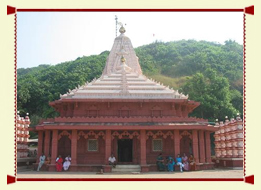 Set along the western coast of Maharashtra, is really a small small village, known as Ganapatipule. It is known for its serene beach and the 400-year old Swayambhu Ganapati temple. Ganapatipule offers alone as an historical pilgrim centre bearing a Swayambhoo, a by natural means formed idol of Ganapati. Set along the western coast of Maharashtra, is really a small small village, known as Ganapatipule. It is known for its serene beach and the 400-year old Swayambhu Ganapati temple. Ganapatipule offers alone as an historical pilgrim centre bearing a Swayambhoo, a by natural means formed idol of Ganapati.
The Temple is at the foot of the hill adjacent to a glorious seashore. The hill alone is considered sacred and a perennial spring flows from the hill to some pond aside from the Temple.
During sixteenth Century Ad, a villager, fed up with regular quarrels in his village, escaped to the Kerda jungles. On his way there, he stumbled upon a normally formed Ganapati idol. Viewing this as a great omen, he built a temple there.
As the phrase spread, people gathered and gradually even settled there. They worshiped the idol, carried out prayers and created additions to the shrine. The Temple gets the hub of grand exercise for five days celebration of Ganesh Chaturthi.
Villager's and pilgrims join enthusiastically inside a procession honoring Ganapati. A taller idol is placed in an ornate palanquin and carried on the shoulders with the devotees by way of the village. The idol within the sanctum is placed in a way that also tends to make it visible.
Swayambhu Ganapati Temple
Swayambhu Ganapati Temple is known for its unique idol of Ganapati constructed on pule (white sand). It truly is swayambhu (self-originated) instead of man made. The idol of Ganapati is made out of copper and depicts the God astride a lion.
It really is placed inside the Sanctum Sanctorum and at sunrise and sunset, a shaft of golden mild penetrates and illuminates the idol. Early inside the early morning, the rhythmic defeat with the nagaras could be heard through the Temple.
|